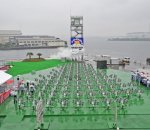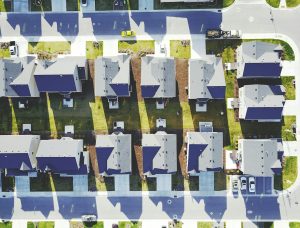HyperHelios is a system that combines elements of Concentrated Photovoltaics (CPV) with Concentrated Solar Power (CSP).
In CPV systems, mirrors or lenses are used to reflect or concentrate sunlight onto small areas of solar photovoltaic cells. These are often ultra-efficient multi-junction cells of space-grade quality and the mirror or lens is situated quite close to the module.
CSP technologies use mirrors (heliostats) to reflect sunlight onto a receiver area that could be situated many hundreds of meters away from some of the heliostats. The receiver area does not use solar cells. Instead of generating electricity directly as in the case of CPV, the receiver medium collects heat used to create steam to drive an electricity generation turbine.
At JFE Engineering Corporation’s Solar Techno Park situated at its Yokohama Head Office in Japan, trials have been under way since last year of its HyperHelios system. The technology uses an array of circular heliostats to focus sunlight onto multi-junction solar cells that also feature a secondary light-concentrating function. These cells are installed atop a 20 meter high tower located quite a distance away from the heliostats.
Reported to work well even in low-light conditions, JFE says HyperHelios offers a cell generating efficiency much greater than conventional silicon solar panel technology, a 25% lower equipment cost and a generating cost of 30% less than conventional technology.
Testing in August last year of a system consisting of 30 heliostats demonstrated a concentrating ratio of 700 times and maximum 26% gross generating efficiency. At that point in time, JFE stated it was continuing refining and testing, with view to achieving 1,000 times concentration and a substantial increase in generated output by expanding and strengthening the heliostats and solar cell module.
With so many mirrors focusing sunlight onto such a small a small area, which is further magnified by the secondary light concentrating function, a great deal of heat is generated – the enemy of PV cells.
To combat this heat which would destroy the solar cells, JFE Engineering has developed its own version of blast furnace body water cooling technology. Heat is transferred to the water, which could perhaps be another potential energy source. As a circulating cooling water system is used, the company says HyperHelios may be suited to regions with little in the way of water resources.
While the HyperHelios prototype in the image above is a small system, the company plans megawatt-class demonstration tests in Japan and other nations during this year and aims to make HyperHelios available commercially in 2013.







































